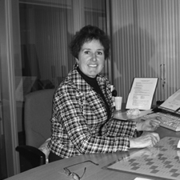Who needs a mammogram?
Breast cancer is the most common female cancer globally, with one woman in eight in the West eventually developing the disease. However improved screening programmes allowing earlier detection and treatment have greatly contributed to the steadily decreasing breast cancer mortality observed from the 1980s on. Although alternative imaging modalities are available, the current gold standard screening tool is mammography. In the majority of EU countries women are invited for screening from the age of 50 until they reach 70. Currently only France extends screening to include women up to 75, though studies are ongoing in several European countries to assess whether a higher cut-off age would lead to a net benefit for older women.
The main limitation of mammography is that the X-rays from different angles can only provide a 2D image of a 3D structure. This leads to false negative results as normal breast tissue can mask tumours. In addition false positive results augment both patient anxiety and hospital workload; the rationale for only screening women from age 50 is that there is a higher rate of false positives in younger women and a much lower incidence of the disease prior to the onset of the menopause. However because randomized, controlled trials have excluded women over 75, there has been a paucity of data concerning the benefits of continuing to screen all older women. One major concern has been that breast cancers that would not pose a threat to women’s health during their lifetime would be diagnosed and aggressively treated. In addition the U.S. Preventive Services Task Force notes that routine exposure to radiation from mammography results in a slightly higher risk of developing breast cancer; this would increase if women were offered screening for possibly an additional 25 years.
Now two recent studies have provided the data that were lacking. The first, a retrospective cohort study carried out in France, compared patient prognosis in women of 75 and older who presented at an oncology center because of a positive mammography result with older women who had been clinically diagnosed. It was found that the former group had improved, disease-free survival rates. The second robust study utilized data from the US National Mammography Database. Over 5.6 million mammograms from 150 facilities in 31 different States over a seven-year period were analysed, with data sorted according to demographics, mammography results and biopsy results. The cancer detection rate and positive predictive values increased with age up to 90, and the recall rate reduced. Surely the jury is no longer out?


